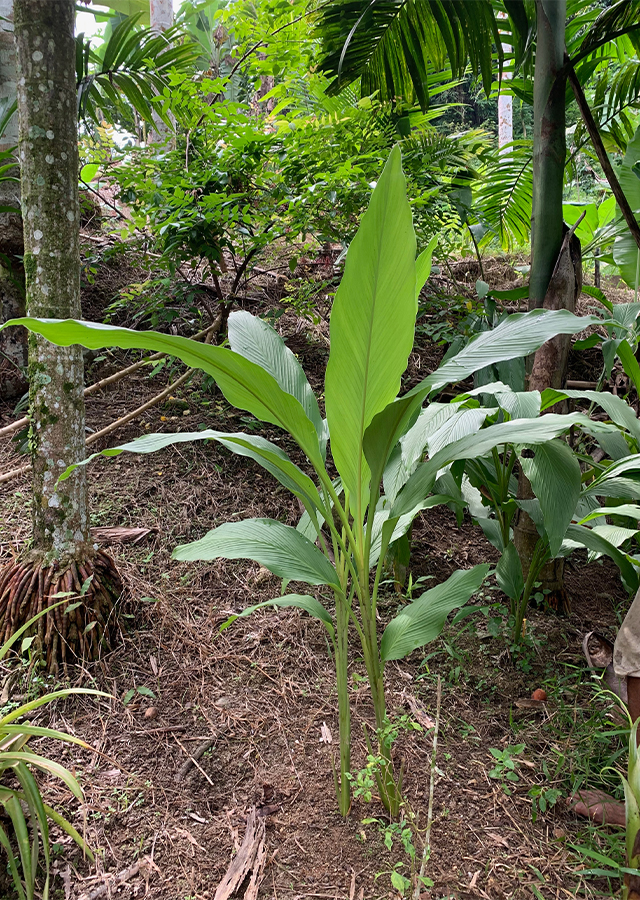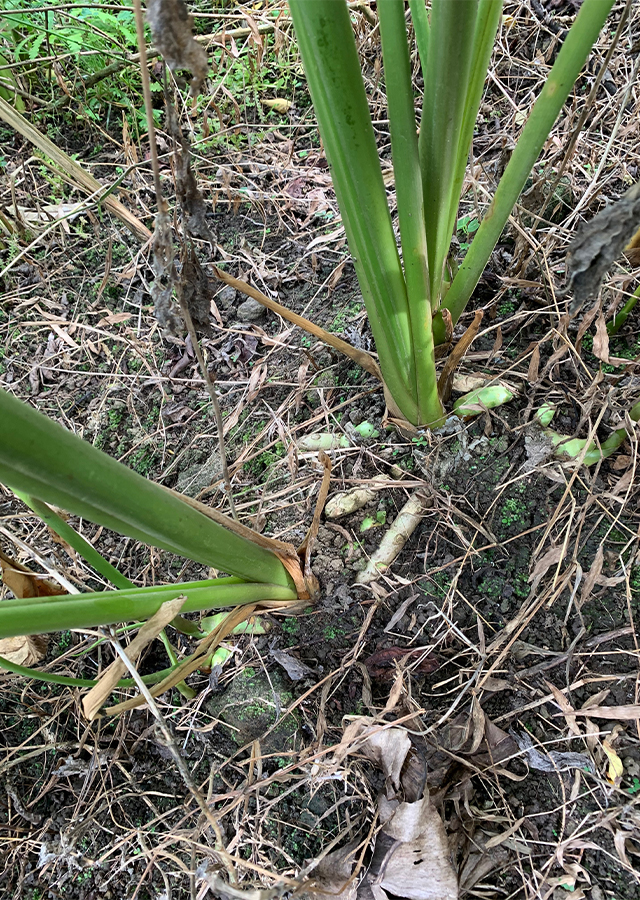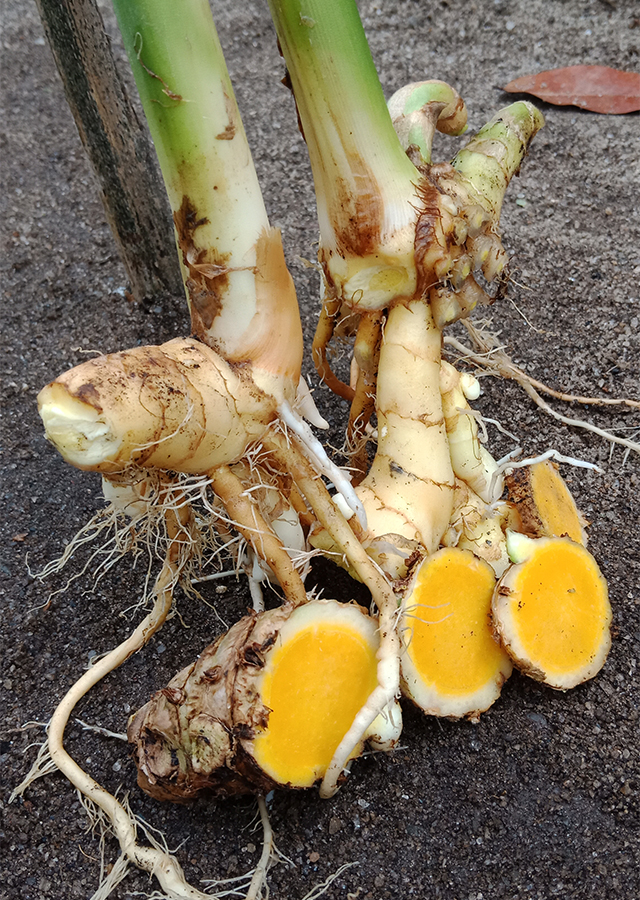Mango ginger
Curcuma mangga Valeton & Zijp
Zingiberaceae
Location in our garden
Principal



Synonym
Habitus
Herbaceous. A perennial plant, herbaceous, growing around 80 cm tall with subterranean rhizome
Part Used
Leaves
Rhizome
Growing Requirements
Need Shade
Habitat
Terrestrial
Overview
Mango ginger is native plant from Java and introduced to Andaman Island, Malaya, Nicobar Island and Thailand. Mango ginger used in South Asian and South-East Asian as well as Far East Asian cuisines. It is widely used as a medicinal plant by Indonesian people. Mango ginger is a popular spice and vegetable due to its rich flavor, which is described as sweet with subtle earthy floral and pepper overtones and similar to that of raw mango. It is a delicious addition to salads and stir fries. The aromatic root is used in perfumery.
Vernacular Names
Kunyit Mangga (Malaysia), Manga Injee (India), Khamin Khao (Thailand), Temu Mangga (Indonesia), Koneng Pinggang, Koneng Tinggang (Sundanese), Temu Tis (Javanese).
Agroecology
It occurs wild in teak forest. It thrives in fertile, moist soils rich in organic matter, in full sun or partial shade, in altitude near sea level to 1,000 m asl. In tropical Asia, it is found in warm, humid monsoon forests, on well-drained.
Morphology
- Rhizome - yellowish-brown out-side, white at the top and citron yellow inside and smelled like mango or kwini when sliced or crushed. Main rhizome is hard, globose or ellipsoid.
- Stems - robust, erect with 2–4 scales or sheaths at the base and with 3–7 leaves higher up.
- Leaves - leaf sheats 30–65 cm long, blades elliptical to oblong-lanceolate, 15–95cm x 5–23cm, and green with light or dark purple- brown zone along the midrib.
- Flowers - inflorescence on a separate shoot, bracts green, coma barcts white at base, purple towards the top. Corolla 3-4cm long, white. Labellum 15-25mm x 14-18mm, white with a yellow median band. Staminodes longitudinally folded, white. Anther with long, narrow spurs.
- Fruits - capsule fruit, opens with three compartments.
- Seeds - 3 celled, ellipsoid seeds.
Cultivation
- Propagated by seed, best sown seed as soon as it is ripe. Germinates best at temperatures around 20 °C.
- Propagated by rhizomes. Division of the rhizome is done when the plant is dormant. Cut rhizomes into small pieces of 2.5–5.0 cm, well decomposed cow dung or cattle manure.
Chemical Constituents
- Roots (Rhizomes) contains an essential oil and pungent principles. riboflavin, demethoxycurcumin, curcuminoids curcumin, myrcene, perillene, sesquiterpene caryophyllene oxide, compounds purified: bioactive labdane, extracts ethanol, phenolic and scopoletin.
- Leaves: cyclohexanecarboxylic acid, isopulego, octahydrocurcumin, coronadiene, phenolic and ascorbic acid.
Traditional Medicinal Uses
- It has antioxidant, antiinflamatory, analgesic, antitumour, antimicrobial, anti-allergic, antiviral properties.
- Rhizomes are traditionally used a stomachic, gastric ulcer, for the treatment of chest pains, fever and general debility, as well as to aid womb healing. Treatment of liver, antiviral agent for dengue fever, to treat skin diseases such as redness.
- In Indonesia, the rhizomes have been used for fever and abdominal ailments, cancer diseases and colic and as analgesic and hepatoprotective agent.
- Leaves are used with leaves of other Zingiberaceae species and other herbs as a heated aromatic herbal bath to treat menstrual pain.
